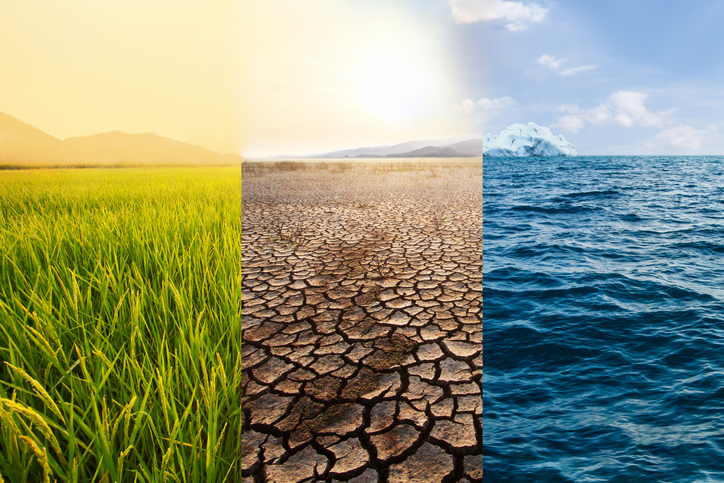Nature risk and finance: A growing challenge
Nature risk, or nature-related financial risk, refers to the potential for financial losses that banks and the wider financial sector face from events associated with the degradation of nature, declines in biodiversity, or the collapse of ecosystems.
Nature-related events can be gradual, such as declining soil health or pollution, or sudden, such as a mass loss of pollinators.
They can disrupt sectors like agriculture by reducing crop yields and threatening business viability, with knock-on effects for banks and financial stability.
Understanding nature risk is challenging.
The way risks are transmitted through complex ecosystems isn’t yet fully understood, and the interactions between climate change and nature loss can be difficult to untangle.
While regulators and financial institutions have made significant progress in addressing climate change, efforts to assess and manage nature risk remain at an earlier stage.
Momentum is growing, but frameworks for nature risk may struggle to keep pace with those for climate, due to specific challenges such as data gaps and the absence of a universally-recognized metric like carbon emissions.
ESG is now business-critical: However, is internal fluency falling behind?
***
Get weekly finance insights from The Intuition Finance Digest. Elevate your understanding of the finance world with expertly-crafted articles and podcasts sent straight to your inbox every week. Click here: https://www.intuition.com/finance-insights-the-intuition-finance-digest/
***
What are the drivers of nature risk?
In a similar manner to climate risk, nature risk drivers fall into two main categories:
- Physical risks
- Transition risks
Physical risks: Damage from ecosystem decline
Physical risks refer to the tangible damage caused by the degradation of natural systems, leading to the loss of both direct economic services, such as the production of goods like timber, and ecosystem services, including carbon storage, soil formation, and water filtration. This degradation also affects broader societal benefits, such as biodiversity, recreation, and cultural value.
Physical risks can be:
Acute – these include more severe or more frequent storms, floods and droughts, or their knock-on effects, such as an increasing number of wildfires that destroy habitats and wildlife.
Chronic – these include the longer-term impacts of nature changes on, for example, farmers’ ability to continue to grow crops.
Transition risks: The impact of policy and market shifts
Transition risks are the risks arising from actions taken to address or mitigate nature-related risks. These include:
Policy shifts – to meet global commitments such as the Kunming-Montreal Global Biodiversity Framework (GBF), governments are introducing policies with economic impacts, particularly where they include specific targets and goals. Policy requirements are likely to evolve over time, increasing uncertainty for businesses.
Technological change – adopting technological solutions to address nature-related risks carries costs and potential disruptions, while emerging innovations may benefit some industries but negatively affect others.
Investor sentiment – investors are increasingly factoring nature-related risks into their decision-making, impacting asset prices and reshaping the risk profiles of investment portfolios.
Consumer behavior – changing consumer preferences, driven by rising awareness of biodiversity and environmental degradation, are influencing demand for products and services.
In addition, banks may face liability risks, although these more commonly affect insurers. Liability risks can arise when third parties seek compensation for damage linked to natural disasters, such as floods and storms. They also include potential financial losses due to fines or legal action for failing to comply with evolving regulatory requirements.

Transmission channels of nature risk
The pathways through which nature-related risk drivers may lead to financial risks for banks are known as transmission channels (distinct from transition risks). These channels can include:
Microeconomic channels – the pathways through which nature risk impacts individuals, sectors, or an individual financial institution, which may in turn affect credit risk, market risk, and operational performance.
Macroeconomic channels – the pathways through which nature risk impacts broader macroeconomic factors, such as GDP growth, commodity prices, and exchange rates, with potential ripple effects across the financial system.

How nature risk amplifies traditional financial risks
Rather than treating nature risk as a separate category, banks generally assess it through the lens of traditional risk types, which nature risk can amplify in a variety of ways.
For example:
Credit risk – nature risk can undermine borrowers’ viability, for example when depleted fish stocks render fishing businesses unsustainable.
Market risk – financial asset values (for bonds, equities, and so on) may drop if reassessments of nature risks facing issuers lead to falling market prices.
Liquidity risk – market conditions may deteriorate, or falling collateral values may force asset liquidations as nature-related risks materialize.
Operational risk – banks may face heightened risks if environmental degradation (deforestation, for example) increases vulnerability to physical damage, such as flooding.
Reputational risk – banks risk reputational damage if they are seen to finance businesses that contribute to biodiversity loss or other harmful impacts.

Key challenges in assessing and managing nature risk
The overarching challenge for banks in understanding and addressing nature risk is that it remains relatively new, with no established policies, models, or data sets to rely on – unlike more traditional risks such as credit risk.
In addition, several unique features of nature risk create further uncertainty, both in measuring current risks and in projecting how they might evolve over time.
These unique features include or relate to:
Timeframe – banks typically plan within horizons of three-to-five years, but the impacts of nature risk may take far longer to emerge.
Pace of change – new information about nature-related impacts is constantly being discovered, requiring frequent reassessments.
Evolving theories – ongoing research may challenge existing assumptions, leading to new theories about how nature risk drivers affect financial outcomes.
Non-linearities – nature risk may accelerate abruptly when tipping points are reached, though it’s often unclear when or where these points might occur.
Uneven impacts – the effects of nature risk vary widely by location, with one region experiencing very different outcomes than another.
These challenges highlight the complexity of incorporating nature risk into financial decision-making and underscore the importance of continual monitoring, adaptability, and learning.
The content for this article is taken directly from Intuition Know-How‘s tutorial ‘Nature Risk’ taken from the ‘Introduction to Sustainability & ESG‘ course which is part of Intuition Know-How’s comprehensive Sustainability & ESG channel.
Fill in the form below to learn more about the full Intuition Know-How offering and how you can use it to improve organizational performance.
Browse full tutorial offering



